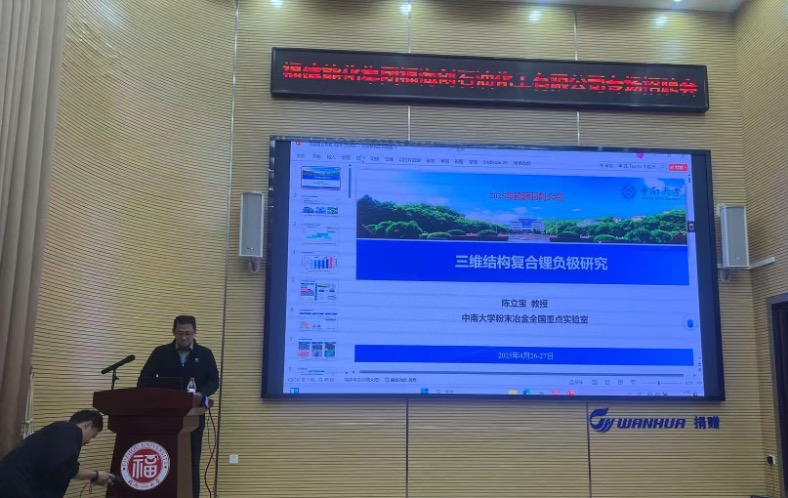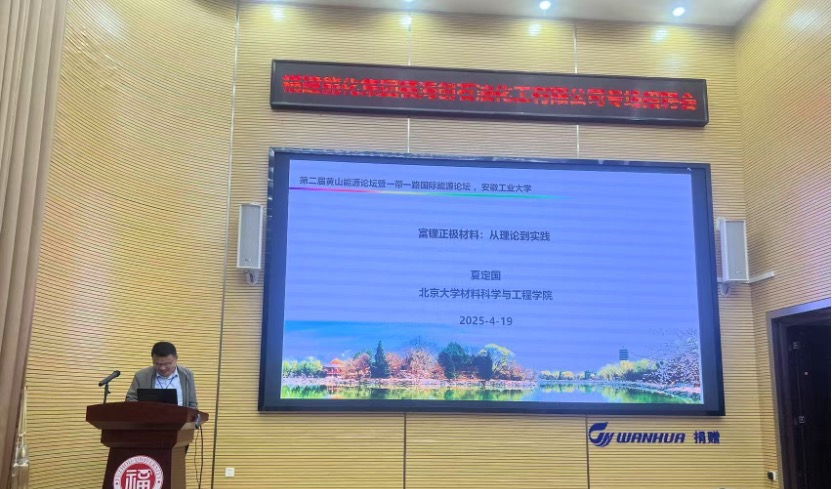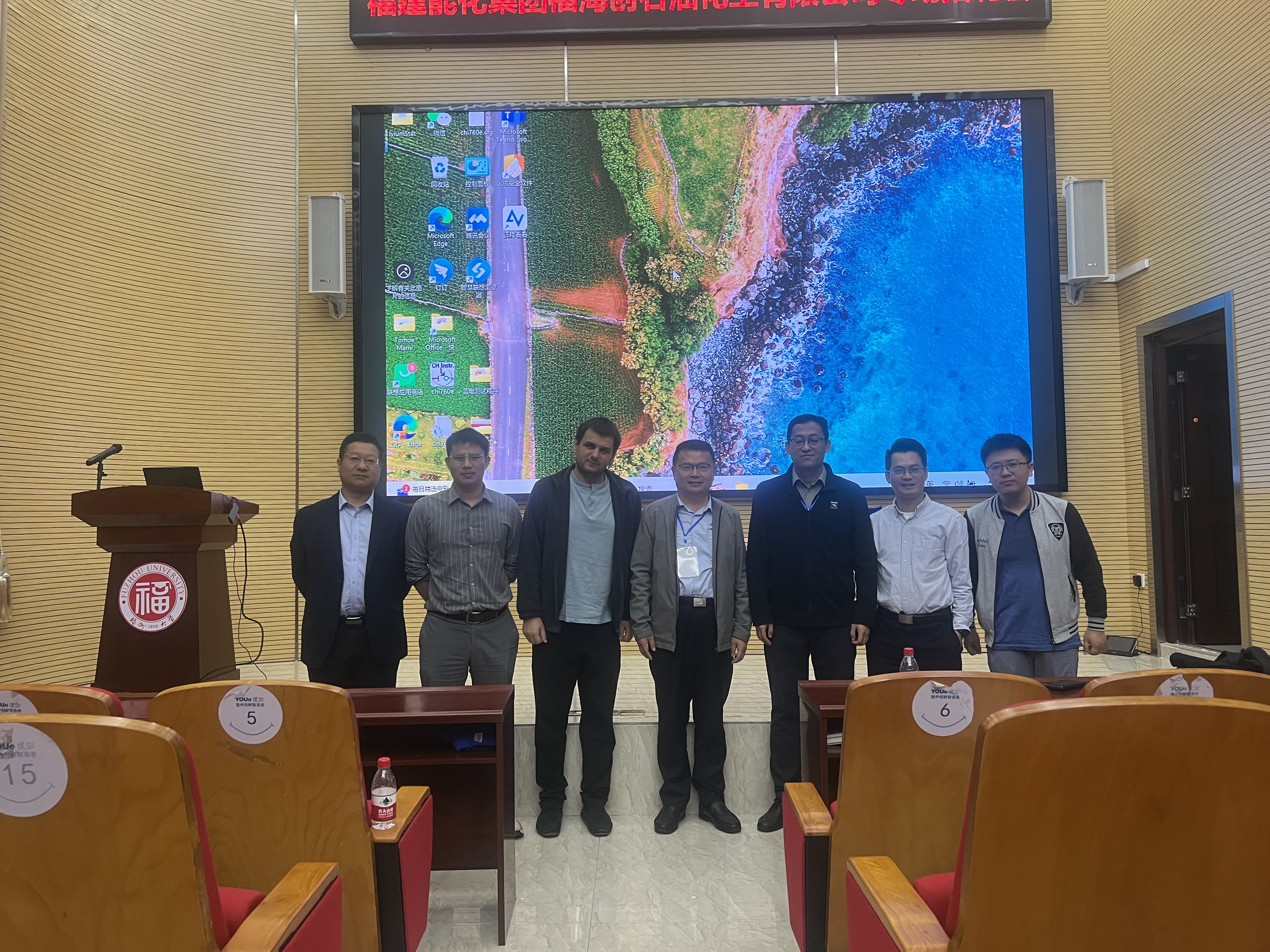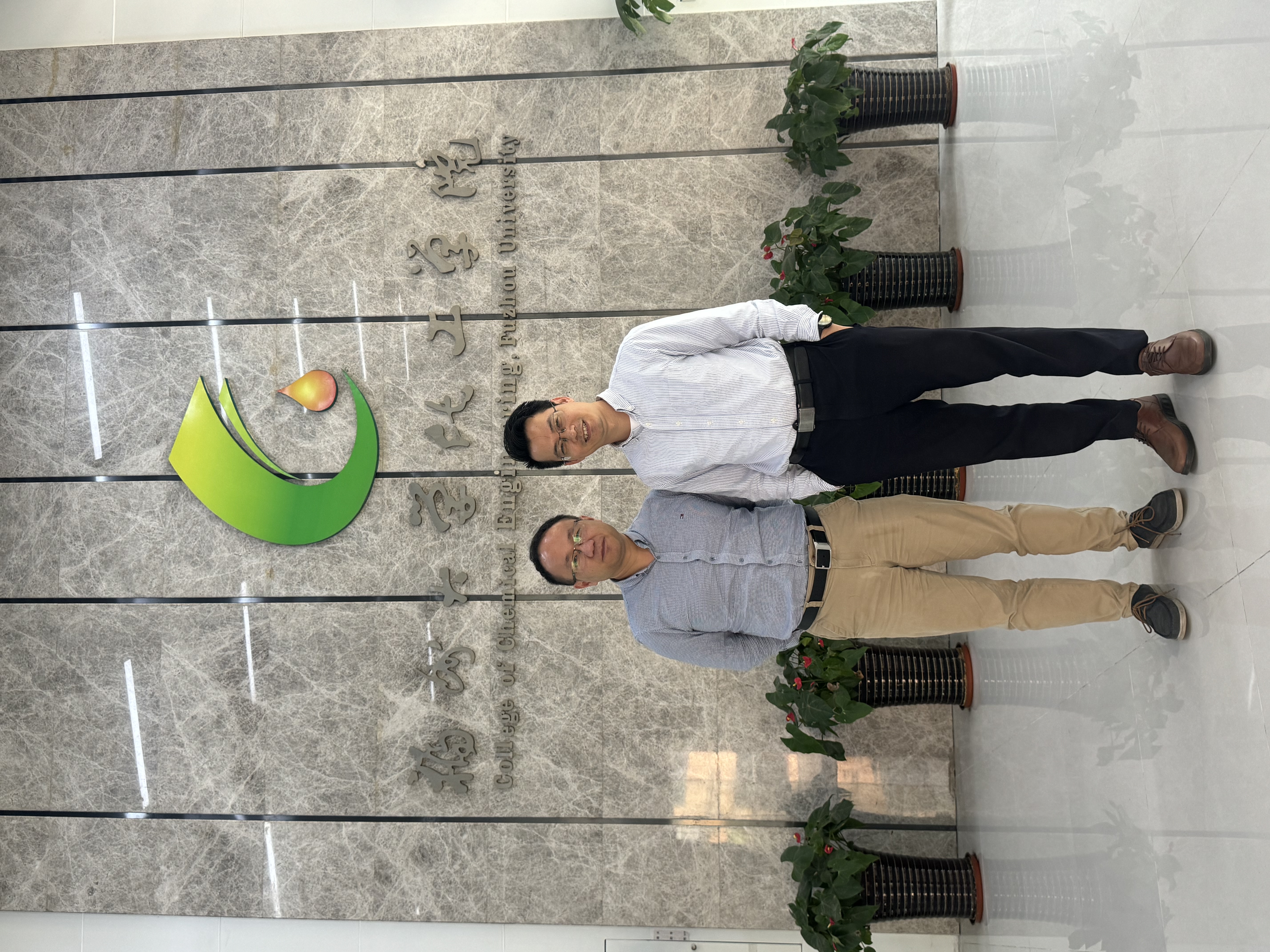On April 27, 2025, Professor Chen Libao from Central South University and Professor Xia Dingguo from Peking University was invited by Prof. Yuxin Tang of the School of Chemical Engineering of the University to give a special academic report.
1.Professor Chen Libao give a lecture entitled “Research on Composite Lithium Negative Electrode with Three-dimensional Structures”
Lithium metal is regarded as a key anode material to break through the existing energy storage system due to its excellent lithium storage properties - a theoretical specific capacity of up to 3860 mAh/g and the lowest electrochemical reduction potential (-3.040 V vs. SHE). Professor Lipao Chen reported a lithium-boron composite anode that can effectively optimize the existing lithium metal materials. the LiB compound phase is in the form of a unique micro- and nanoscale fiber, with a skeleton that combines both supportive and lithophilic capabilities. In addition, LiB has a high free lithium content, with a skeleton mass ratio of ≤20%, and the material's specific capacity can reach more than 3000mAh/g. In addition, Prof. Chen used boride raw material to form the interpenetrating phase of fibers and particles to anchor LiB fibers in order to further fix the fiber skeleton of LiB. The specific mechanism: after the free lithium is detached from Li-B@SSM, the LIB fibers are anchored in the grid as a lithium-friendly skeleton, inducing the subsequent lithium to undergo a directional and uniform deposition in the grid. The micron-scale SSM framework synergized with the LIB nanofibers to reduce the local current density and homogenize the surface electric field and lithium ion flow. Subsequently, Prof. Chen also presented further optimization of the skeleton: the introduction of stainless steel grids can induce uniform deposition of Li, which further improves the performance of the composite metal anode and demonstrates the advantages of the material.
Prof. Chen Lipao's presentation systematically analyzed the latest breakthroughs in the field of electrochemical energy storage from a forward-looking perspective, and his innovative viewpoints triggered in-depth thinking and enthusiastic discussions among the participating teachers and students. In the interactive session, the participants started professional dialogues around the core topics of high energy density battery materials and interface optimization strategies, and conducted multi-dimensional academic collisions on the cutting-edge directions of solid-state electrolyte engineering applications.

Lecture scene
2.Professor Xia Dingguo give a lecture entitled “Lithium-rich Anode Materials: From Theory to Practice”
Prof. Dingguo Xia introduced the mechanism and advantages of lithium-rich cathode materials in detail. Prof. Dingguo Xia found that there is a size effect of transition metal ion migration in lithium-rich cathode, they compared the electrochemical performance of lithium-rich cathode materials with different particle sizes, and combined with the in-situ high-voltage response test to explore the effect of particle size on voltage degradation, and found that the small-sized particles can be reversible laminar-spinel phase transition. This finding significantly improves the voltage stability during cycling. Prof. Dingguo Xia's further research found that lithium is present in the transition metal layer of lithium-rich materials, constituting a lithium-oxygen-lithium configuration, which creates a non-bonded orbital of oxygen near the Fermi surface, which crosses the Fermi surface during charging and participates in the charge-discharge reaction. Because it is a non-bonding orbital, the anion and cation jointly participate in the reaction to enhance the reversible capacity of the material. At the same time, Prof. Xia also analyzed the bonding properties of metal and oxygen-π, σ-π and non-bonded states in the material, revealing the nature of the interaction between ligand and metal.
Prof. Dingguo Xia's presentation systematically analyzed the latest research on lithium-rich materials, and his innovative ideas triggered in-depth thinking and enthusiastic discussions among the participating students and faculty.

Lecture scene
After the report, Professor Chen Libao、Professor Xia Dingguo and Professor Yu Xiqian visited our laboratory and had in-depth discussions with the members of our research lab. Finally, they put forward guiding opinions on the research directions of our research lab.

Group photo

Group photo
